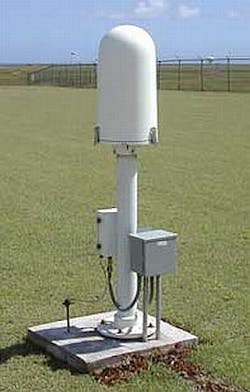Army eyes mast-mounted infrared sensors able to detect and track humans and aerial drones
FORT BELVOIR, Va., 28 Feb. 2013. U.S. Army researchers are surveying industry to find companies able to build ground-based wide-area infrared search and track (IRST) sensors that can track unmanned aerial drones, as well as humans on foot, art ranges as far as several kilometers.
The Army Contracting Command-Aberdeen Proving Ground (ACC-APG) Belvoir Division at Fort Belvoir, Va., issued a sources-sought notice Tuesday (W909MY-13-R-PGSS) for the Passive Ground Based Persistent Surveillance Sensors (PSS) program for mast-mounted sensors that can provide long range detection and tracking of humans and unmanned aerial vehicles (UAVs).
ACC-APG Belvoir is doing the industry survey on behalf of the Army Research, Development and Engineering Command (RDECOM) Communications-Electronics Research, Development and Engineering Center (CERDEC) Night Vision and Electronic Sensors Directorate (NVESD) at Fort Belvoir.
Army researchers particularly are interested in electro-optic infrared (EO/IR) sensors and algorithms that can perform automated, real-time detection and tracking of several UAVs and humans simultaneously over extended periods of time.
These sensor systems also should be able to hand off target tracks between separate sensors to maintain and update the histories of target tracks. Sensors must work during the day and at night against backgrounds such as sky, clouds, and mountains.
Sensors should be cued automatically for man-in-the-loop confirmation of detected targets, and image processing algorithms should provide real-time detection, tracking, classification and recognition of targets.
These kinds of ground-based UAV- and human-tracking sensors should be ready for at least a Technology Readiness Level (TRL) 5 or 6 demonstration by 2015.
Companies interested should respond with 15-page white papers no later than 28 March 2013, to ACC-APG - Washington, ATTN: CCCE-CW, 10205 Burbeck Road, Fort Belvoir, VA 22060-5863.
For questions or concerns contact the Army's Sabin Joseph by phone at 703-704-0835. More information is online at https://www.fbo.gov/notices/1bbbd0e05380c7af38329ccc94c52524.

